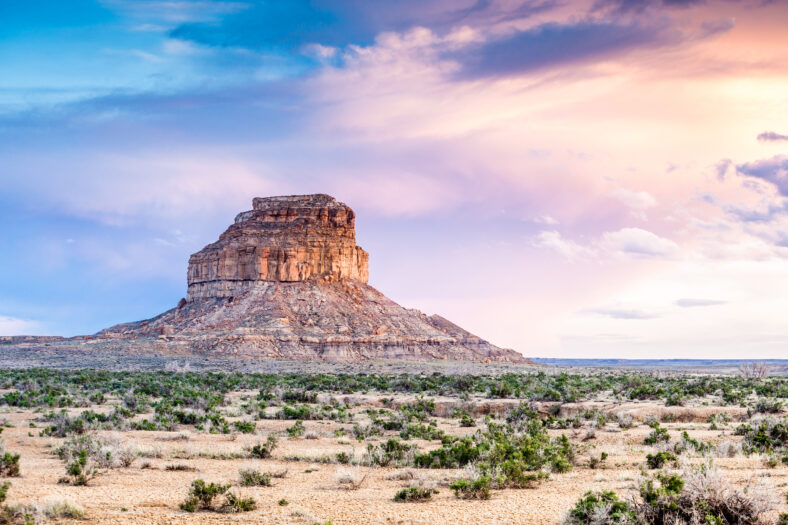This 1,000-Year-Old Indigenous Road Aligns With The Winter Solstice

A 1,000-year-old road near Chaco Canyon in New Mexico was recently revealed with lasers. According to researchers, the road was linked to Indigenous settlements in the area. It serves as a sacred path between natural springs.
In addition, a second, previously unknown road running almost parallel to the first road was uncovered. The two roads align with the winter solstice sunrise over Mount Taylor, a mountain that is still sacred to Indigenous peoples today.
The discovery was made at Gasco, located west of Albuquerque and about 50 miles south of Chaco Canyon. The fact that the roads align with the sunrise on the winter solstice indicates that they were more important to the Indigenous culture’s system of cosmological beliefs than for regular traffic.
“One of the really exciting things about the work we’ve been doing with Chacoan roads is that they’re forcing us to reconceptualize what a road might be, what a road might mean,” said Robert Weiner, the lead author of the study and an archaeologist at Dartmouth College.
After examining public maps created with remote sensing technology involving the use of lasers, the researchers determined that the road at the Gasco site was nearly four miles long. The lasers revealed the hidden structure beneath vegetation.
Previously, they had only detected a few hundred feet of the road.
The second, almost parallel road ran about 115 feet to the south of the first road and the remains of a wall of rocks shaped like a horseshoe, which may have represented a shrine.
Between A.D. 850 and 1250, Chaco culture thrived in parts of the American Southwest centuries before the arrival of Europeans.
The culture may have started among the local people as a religious movement, but it is hard to tell because the details of their beliefs are unclear.

Sign up for Chip Chick’s newsletter and get stories like this delivered to your inbox.
The Chacoans are known for their pueblo buildings at Chaco Canyon and other sites. The buildings were abandoned long ago, and it is thought that extended periods of drought, along with other catastrophes, led to their demise.
Some Indigenous groups, including the Hopi and the Zuni peoples, are descended from the Chacoans. The Diné people, also known as the Navajo, live in the region as well.
The two almost-parallel roads were carved into sandstone bedrock and were about 30 feet wide. They were much wider than was necessary for a society that did not have pack animals or vehicles with wheels. In some areas, there were ramps and staircases lined with mounds of sandstone and earth from the road excavations.
At times, the roads may have been used for practical reasons like transporting lumber, but their main purpose was to play a ceremonial role in Chacoan beliefs.
The study was published in the journal Antiquity.
More About:News